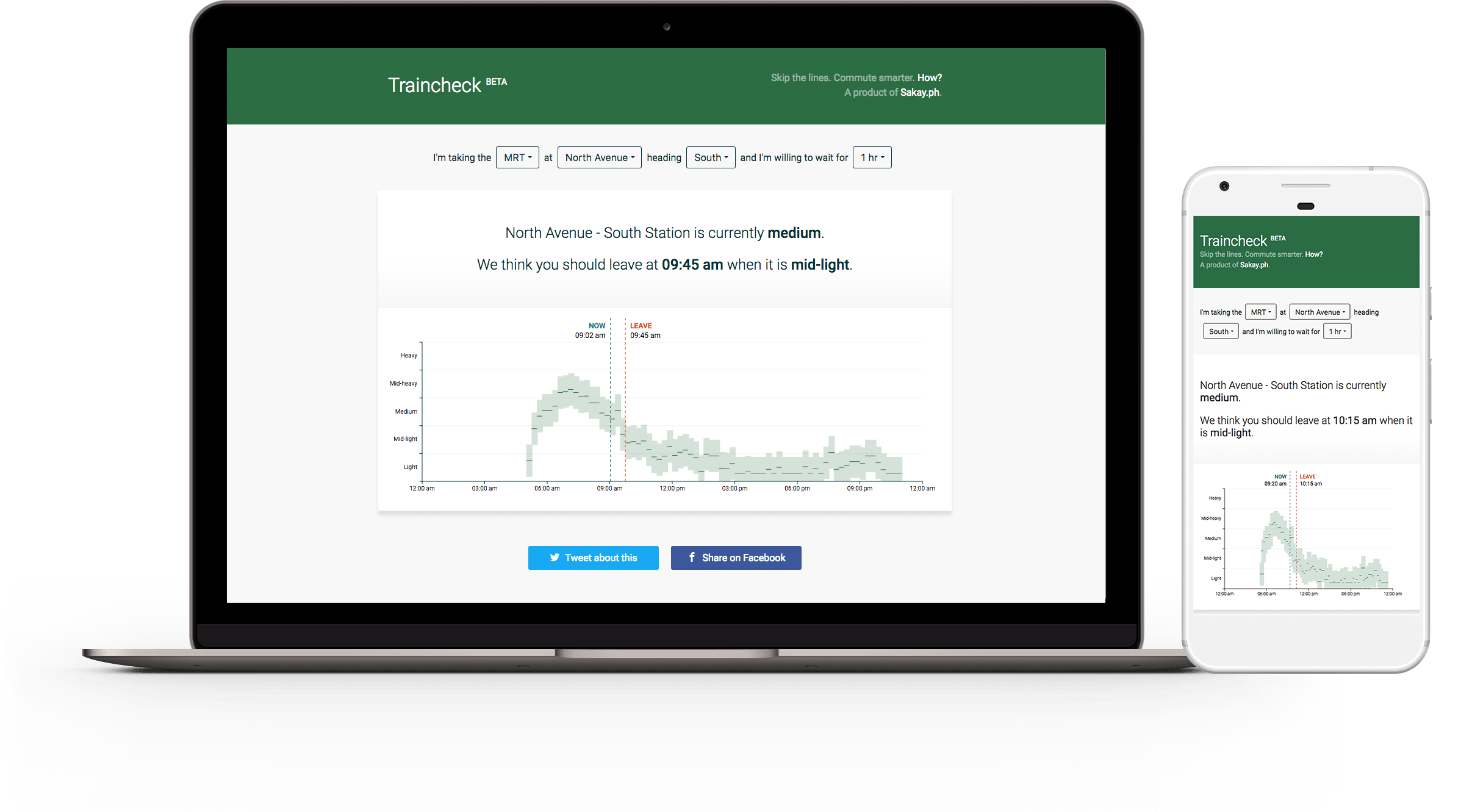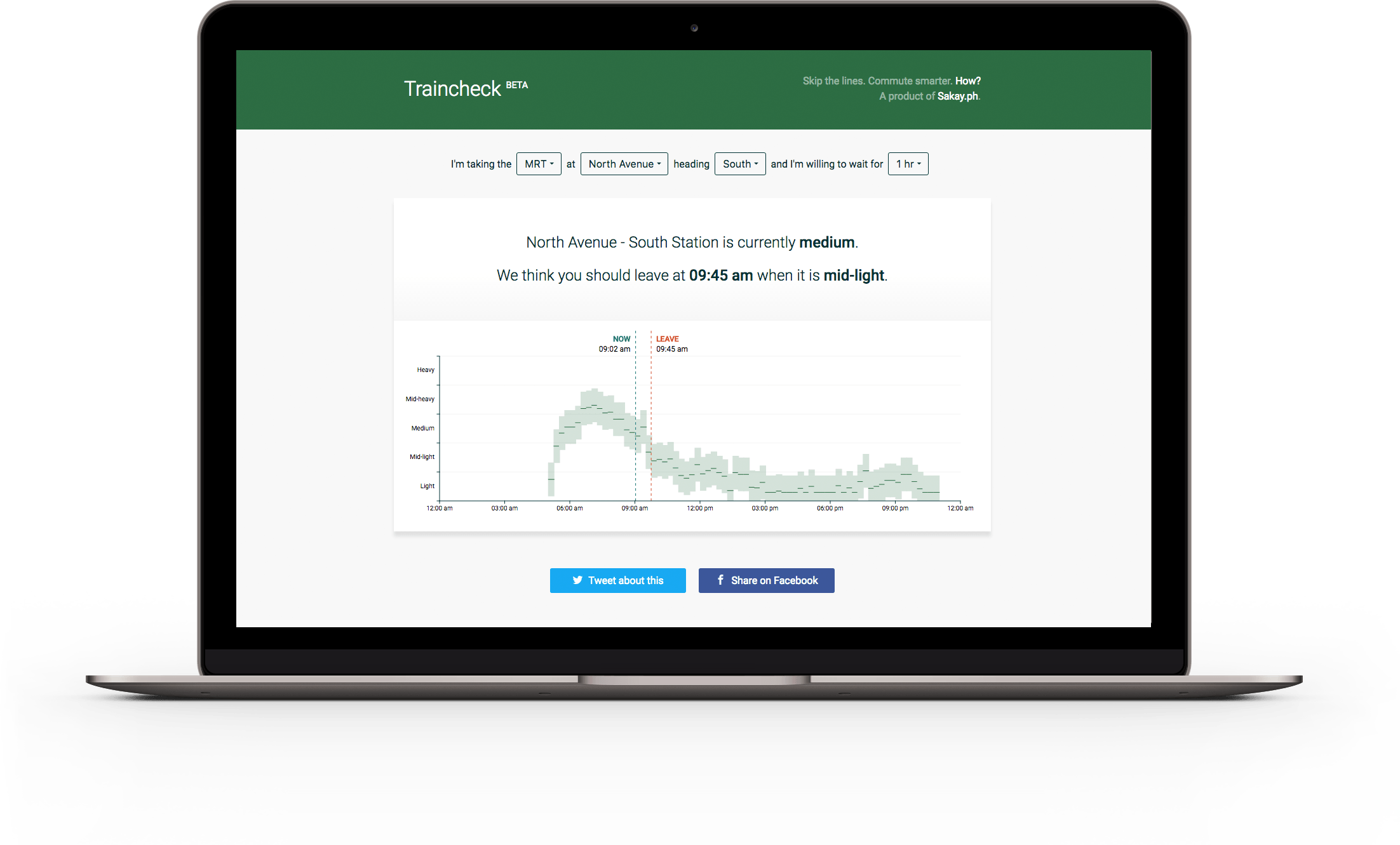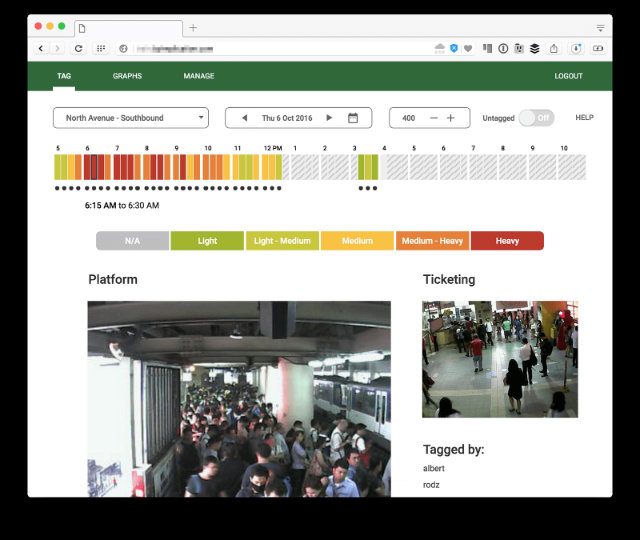SUMMARY
This is AI generated summarization, which may have errors. For context, always refer to the full article.

MANILA, Philippines – Describing itself as the “Google Maps or Waze, but for commuting,” Sakay.ph launched a new service called Traincheck for passengers of the Metro Rail Transit Line 3 (MRT3).
Commuters just need to open the Sakay.ph mobile app or website, and enter the station they plan to ride from. An additional option lets them choose which direction to take, either northbound or southbound. They will also be asked how long they are willing to wait.
Traincheck will automatically show the current congestion level at the chosen station, the best time to leave, and a summary of congestion for the day.
For instance, in the image below, the North Avenue station heading southbound shows “medium” congestion as of 9:02 am. Traincheck suggested that commuters leave at 9:45 am when the congestion would be “mid-light.”

Estimating congestion levels
Traincheck bases its information on footage from closed-circuit television (CCTV) cameras at every MRT station, which are streamed online by the Department of Transportation. A software captures images from every stream at regular intervals.
The Sakay.ph team will then estimate a congestion level for each image. They follow 5 levels of congestion: light, light-medium, medium, medium-heavy, and heavy.

There are 3 factors in estimating congestion levels:
- Number of people in line at the ticketing station
- Number of people in line for the arriving train
- Number of people in line who immediately get into the train that arrives
It’s possible that a station may not seem crowded, but if commuters can’t immediately get into a train, that station will be tagged as medium-heavy.
“Over time, our software can begin to form an understanding of when crowds are formed, based on these image ratings. Using this, we can use historical data to derive patterns by which we can predict future congestion levels,” co-creator Philip Cheang shared in his blog.
Developments and plans
For now, Traincheck only accommodates the MRT3 due to the availability of data. Sakay.ph’s marketing manager Rodrick Tan said they have plans to include the Light Rail Transit (LRT) as soon as data from the LRT become available.
As of posting, Traincheck still has incomplete data on Taft Avenue-northbound and Guadalupe-southbound, but data on the rest of the MRT3 stations are complete.
“It just requires a bit more data so we have better confidence on the data that we publish,” Tan explained. “[But] that should be done by around Tuesday (November 29), next week.”
Aside from the MRT3 congestion, Sakay.ph also offers a list of transportation routes and an accompanying map showing the jeeps or buses the user should take, where to get off, and an estimate of how much to pay.
This should make it easier for commuters to access information, and plan a better travel schedule with just a few clicks.
“By launching Traincheck, we hope to help with the metro’s transport situation. Our goal is to save daily train riders 10 minutes every day by cutting down time spent lining up at suboptimal times. Reducing commuters during peak hours will also help distribute rider load, making service better for everyone,” Sakay.ph said in a statement on Tuesday, November 22.
Traffic woes
The founders of Sakay.ph have been offering ideas on how to fix Metro Manila’s transport problem.
On the government side, the Metropolitan Manila Development Authority (MMDA) has its own app for traffic in key roads.
Earlier this month, the MMDA also joined the Waze Connected Citizens Program for real-time data-sharing for traffic management and planning. The Philippines is among the countries with the “worst traffic on Earth,” according to a survey done by Waze in 2015.
The traffic crisis has long plagued Metro Manila, costing the country an estimated P3 billion a day.
Congress has held a series of hearings since August to determine whether or not President Rodrigo Duterte should be granted emergency powers to address the traffic crisis in Metro Manila, as well as in the cities of Cebu and Davao.
Senator Grace Poe, chairperson of the committee on public services, previously said that the bill may likely be approved in the Senate by December. House Speaker Pantaleon Alvarez said, however, that congressmen are unlikely to approve the measure before they go on Christmas break. – Rappler.com
Add a comment
How does this make you feel?
There are no comments yet. Add your comment to start the conversation.